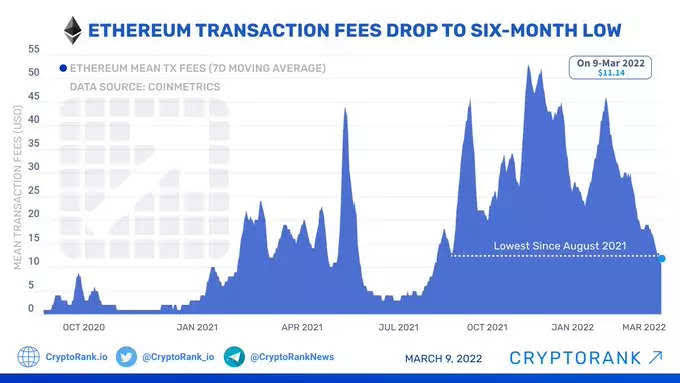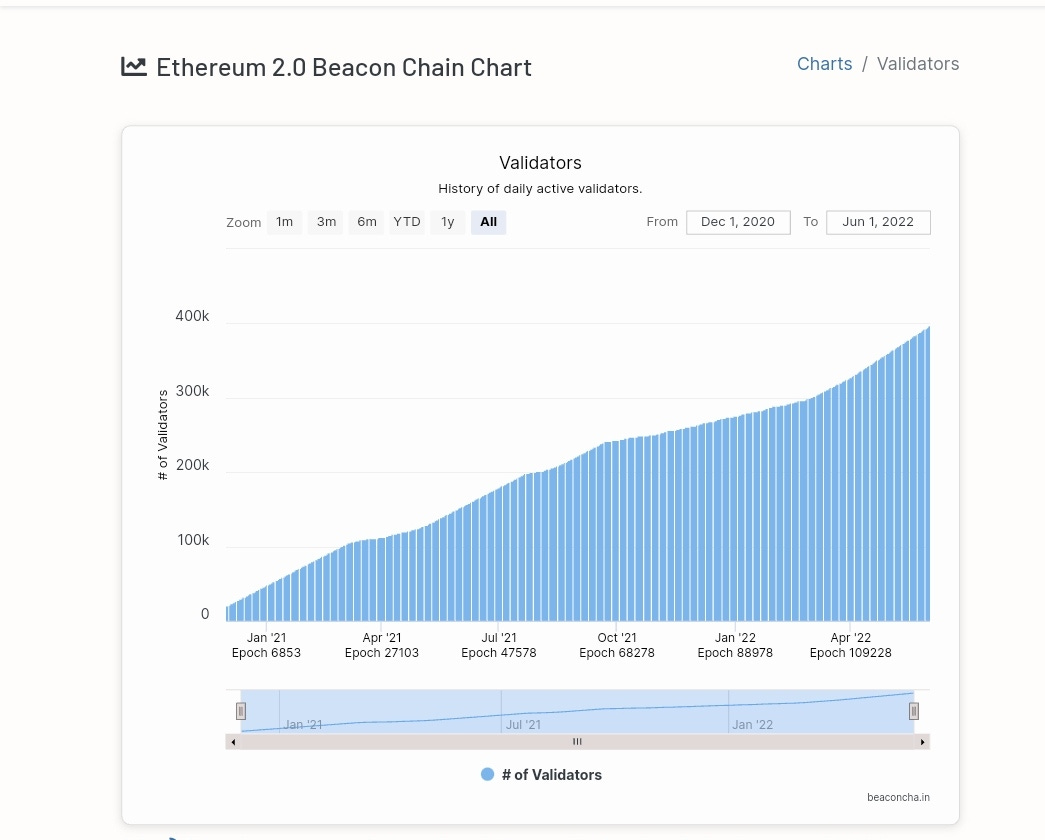Ethereum's Merge Now Has A Date
VYSYN Weekly Release #99: What does the transition from PoW to PoS mean for investors?
The highly anticipated upgrade to the biggest smart contract blockchain network, Ethereum, is nearing its launch. Dubbed Ethereum 2.0, the upgrade seeks to address the network's scalability and security issues. The most notable upgrade is the switch from a Proof-of-Work (PoW) consensus mechanism to a Proof-of-Stake (PoS) model.
In the latest VYSYN Release, we will examine what Ethereum 2.0 is all about and how it intends to achieve its goals. We will also consider how the upgrade will affect the Ethereum ecosystem, investors, and the DeFi space.
What is Ethereum 2.0?
Ethereum has long been the number one smart contract blockchain, with thousands of decentralized apps (dApps) built on it. However, with the network's low scalability and mounting gas fees, developers and investors are moving to alternative blockchains that offer higher throughput with low fees. This is one of the reasons Ethereum's gas fees saw a major decline in recent months, as developers moved away from the mainnet.
(Source: CryptoRank)
To boost efficiency, Ethereum is launching a series of upgrades that should solve the bottlenecks it is facing. Popularly referred to as Ethereum 2.0 or Serenity, the upgrade aims to enhance the speed, efficiency, and scalability of the network.
Ethereum will, among other things, change its consensus mechanism from Proof-of-Work (PoW) to Proof-of-Stake (PoS). Most of the earliest iterations of modern-day blockchain networks, including Bitcoin and Ethereum, use the PoW consensus mechanism.
In this system, miners use a machine’s processing power to solve complex mathematical puzzles and verify new transactions. The first miner to solve the puzzle adds a new transaction to the blockchain and is rewarded with the network’s native cryptocurrency. The flaw with this system is its energy-intensive processes.
The Proof-of-Stake system differs in that instead of miners with energy-intensive equipment, network participants can stake the native cryptocurrency and become validators. Therefore, Ethereum's switch to PoS will lay to rest the network's carbon footprint issue.
The digital asset industry has been anticipating the launch of these updates to the Ethereum network for several years. After numerous postponements and changes to the overall tone of the updates, the mainnet launch is imminent. However, in January 2022, the Ethereum Foundation made a significant change.
The Foundation said it would stop referring to the upgrade as Ethereum 2.0. This rebrand is intended to indicate that what has been previously referred to as Ethereum 2.0 is not a new network as some conclude but a network update. Additionally, it was to protect the interest of users, as scammers are defrauding unsuspecting investors by claiming to change their ETH 1.0 coins to ETH 2.0 ones.
Thus, the present Ethereum system is now called the "execution layer," where smart contracts and network rules reside. Ethereum 2.0 will now be referred to as the "consensus layer," which ensures that all mechanisms contributing to the network are acting in accordance with its rules.
The Merge test on Ropsten successful
The Ethereum upgrade has been happening in phases, with the first phase, Phase 0, already live. Phase 0 introduces the Beacon Chain. This is essentially a new PoS chain designed to coordinate staking and set the stage for subsequent Ethereum upgrades, including Shard chains.
Ethereum's current chain will eventually merge with the Beacon Chain, a highly anticipated event that is now referred to as "The Merge". This is the second phase or Phase 1 and will represent the official switch to the PoS consensus model.
As the network inches toward The Merge, Ethereum developers are using new testing infrastructure to assess network mechanics and client readiness. These tests are vital to the advancement of the network because they allow developers to find bugs in the code that could be missed using the devnets.
Recently, developers have recorded a milestone on the path to switching the network to a PoS consensus mechanism. On May 30, 2022 developers successfully deployed the new Ethereum Beacon Chain on the Ropsten testnet.
(Source: BeaconChain Explorer)
The Ropsten testnet is one of many testing grounds for Ethereum clients. It mimics some aspects of the Ethereum mainnet, including the use of a valueless form of ETH to execute transactions and the coding environment. The only difference is that changes made there do not affect the mainnet.


This is the first time that the Beacon Chain has been merged with a public testnet. When Ropsten undergoes its own Merge, it will provide insight into what the real Merge will look like on the mainnet. The effects on the testnet, its applications, and clients give developers a clue about what to expect during the mainnet Merge.
It also allows Ethereum developers to monitor the network’s performance on an advanced level, with an eye on identifying bugs such as those associated with clients and validators. Speaking of bugs, a "mischievous miner" had tried to fast track the recent Ropsten deployment by propping up hashrate on the testnet.
Fortunately, Ethereum developers detected the malicious move and delayed the difficulty bomb to a convenient date. The difficulty bomb is a rule created by Ethereum developers in 2016 designed to increase the difficulty level of puzzles required for proof of work mining, ultimately making mining impossible. If released before The Merge, it could freeze the entire network.
Ethereum co-founder Vitalik Buterin confirmed at the Ethereum Shanghai Summit that the long-awaited mainnet Merge could likely happen in August or earlier. According to the Ethereum Foundation, the full upgrade to Ethereum 2.0 is expected to take place by 2023.
What will the transition mean for investors and the DeFi space?
Should The Merge on mainnet prove successful, it will have a drastic effect on the Ethereum ecosystem and the DeFi space. Ethereum has a massive DeFi ecosystem, but most of it is unusable as it is too slow and congested. This congestion causes larger transaction fees than the expected amount the user is trying to move.
Presently, Ethereum can only handle approximately 30 transactions per second. Ethereum 2.0 aims to scale this figure to over 100,000 transactions per second by the time the upgrades roll out. This will make Ethereum one of the fastest and scalable blockchains.
Additionally, Ethereum 2.0 is designed with security in mind. Most PoS networks currently have a small set of validators, which makes for a more centralized system and decreased network security. Ethereum 2.0 requires a minimum of 16,384 validators, making it much more decentralized and secure. There are currently over 380,000 validators on Beacon Chain.
(Source: BeaconChain)
Ultimately, experts speculate that a major price increase will follow Ethereum's upgrade. This is mainly because Ethereum and its DeFi network will become far more practical to average users. Speaking in a recent episode of his Crypto Over Coffee podcast, YouTuber Hashoshi said, "I do believe that we will see a positive reaction in the markets post-merge later this year. That’s because the Ethereum merge could speed up processing and offer greater security and stability, and a 98% or greater reduction in Ethereum’s energy consumption."
With low fees and lower barriers to entry, allowing users to move smaller amounts, Ethereum has the potential to grow significantly and the DeFi space along with it. Of course, this will all depend on the success of the Ethereum 2.0 mainnet launch and everyone is eagerly waiting for it.
About VYSYN Ventures
VYSYN Ventures is a longstanding venture capital company that specializes in funding and supporting disruptive startups in the blockchain and cryptocurrency industry. We have provided early-stage support to several projects that have grown USD market capitalizations of hundreds of millions and even billions. Our incubation program focuses on providing capital allocation, versatile marketing support, and tech assistance.






👏